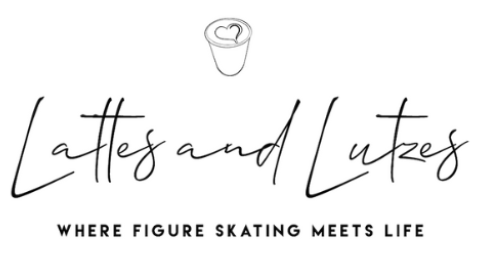
Why is it that when you tell someone you figure skate, they immediately ask, “Can you skate backwards?” “Do you have a triple axel?” or “Are you going to the Olympics?” If you answer “no” to the last two, you’re often dismissed with, “Oh, so why do you skate?” It’s curious how being involved in a niche sport seems to demand expertise to justify your participation. Yet, if a friend told me they cycle, I wouldn’t ask, “Is your bike carbon fiber? Did you do a century ride (100 miles) this weekend? What’s your best finish in the Tour de France?”
Why does figure skating seem to require top-tier expertise and competitive success to be viewed as a valid pursuit? Here are my thoughts, and I’d love to hear yours.
The Fragments We See
First, only the highest levels of figure skating are shown to the general public. The skaters you see on TV are at the national or international level, and if you’re watching on a major network, you only see the top finishers—the top 1% of the one-percenters. This is quite different from sports like hockey, where you watch all teams, whether winning or losing in their divisions.
Hockey fans can follow their teams weekly during the season. Players have standout moments and times when they aren’t at their best, but that’s part of the bigger picture. In figure skating, only the top competitions get televised, and just a handful of skaters represent their countries internationally. As a result, you may only see an elite skater 3–4 times a season, magnifying the importance of each performance.
Big Jumps or Bust?
Unlike sports where outcomes are straightforward—like whether a puck enters the net or a sprinter finishes in a specific time—figure skating has a complex judging system. Currently, it often emphasizes technical difficulty, giving the impression that it’s “all about the jumps” or that judging is unfair. While figure skating has experienced judging controversies, the current IJS system strives to balance all elements in a program, including spins, jumps, footwork, and presentation.
Since jumps are the most visible element, commentators often focus on them, leaving some viewers puzzled by the rest of the program (such as footwork sequences or spins, which are anything but filler content) or why one skater outscored another. Non-jump elements rarely receive attention in competition broadcasts.
Perfection Isn’t a Goal
When athletes from other sports discuss their goals, they usually sound like: “I want to run a 6-minute mile” or “I’m focusing on defense.” You wouldn’t hear a baseball pitcher say their goal is to pitch a perfect game—it happens, but it’s extremely rare.
So, why do figure skaters feel pressured to achieve a specific score (something they can’t control, as different judging panels weigh deductions differently) or skate a “clean” program? While it seems reasonable, a clean program depends on how your elements are going during training, how you feel on the day, and whether the technical panel agrees with your version of “clean”—given they have slow-motion replays.
Rome Wasn’t Built in a Day
When we watch elite athletes, it’s easy to forget that their success took years of hard work and perseverance. Even when commentators make it seem like someone “burst onto the scene,” the reality is different. If you follow figure skating, you’ve likely heard of Nathan Chen, aka “The Quad King,” but he too started with basic moves and small jumps.
Malcolm Gladwell popularized the “10,000-hour rule” in his book Outliers, suggesting it takes around 10,000 hours of practice to master a skill. Let’s do some math: if you skated 10 hours a week for 20 years, you’d hit roughly 10,000 hours—enough to be considered an expert.
The Most Improved Swimmer Award
Remember this award from summer camp? One camper would start the summer scared to dive off the dock, but after weeks of hard work, they’d be rewarded with a trophy for their progress. If you were that kid, I bet you kept that trophy long after others were forgotten because it symbolized dedication and effort.
Why can’t we apply this mentality to figure skating? The focus could shift to achieving personal milestones—logging practice hours, mastering a specific jump, or performing your best at a competition—and letting the results fall as they may.
“Success in figure skating doesn’t have to be defined by podium finishes. It can be as simple as mastering a move you’ve practiced for weeks or simply enjoying time on the ice.”
So, if we replay the conversation from the beginning, it might go something like this:
Can you skate backwards? Yes.
Do you have a triple axel? No, but I’m working on my lutz.
Are you going to the Olympics? Unlikely, but I’m enjoying every moment of my skating journey.

Now I understand The queries about cycling!
I liked the layout and the highlighted message/point near the end….agree, there IS joy in the pursuit. I also appreciate the reality- check of what folks are watching on a broadcast AND the very select piece of the entire completion that is shown! Good perspective!